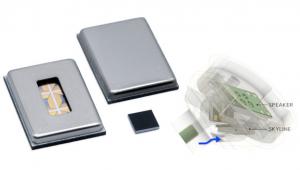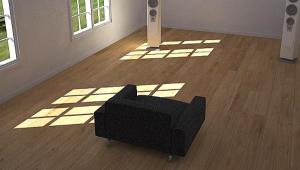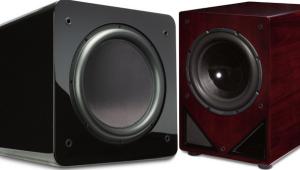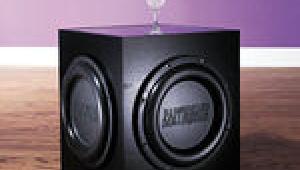How Much Power Do You Really Need?
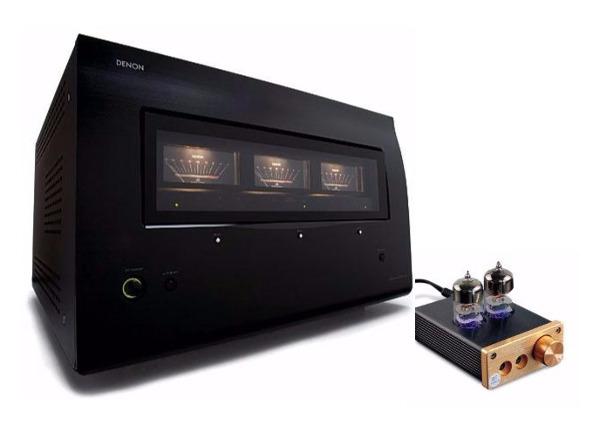
But expert or not, I can’t answer it: not without knowing the details of your speakers, your room’s size, layout, and furnishings, your listening habits, musical tastes, boxers-or-briefs, and a dozen other details. I can, however, arm you with a few concepts to think about, concepts that, if mastered, hold the key to all power. Well—audio power, anyway.
What's In a Watt?
First, foremost, and forever, the diabolical decibel (dB). To hold a meaningful conversation we must talk amplifier power in terms of decibels, a scale that expresses power comparisons the way we hear: logarithmically. A decade or so back, a movement to make the “dB watt”—decibels in reference to 1 watt—a spec-sheet staple enjoyed brief traction, but today the abbreviation “dBw” is rarely seen. Yet it’s a superbly useful and far more meaningful way to describe amplifier capabilities—and once you get the basics, you can roughly convert spec-sheet wattages to dB watts easily enough. The dB watt’s key value is this: Assuming reasonably linear loudspeaker behavior, dBw translate more or less one-for-one to the increase in useful loudness you can expect from a given loudspeaker in a given setup.
We call an output of 1 watt, connected to a loudspeaker-like test-load of 8 ohms (effectively 2.83 volts from the amplifier,) “zero dB-watts,” or 0 dBw. That is, relative to 1 watt, 1 watt is precisely zero greater or smaller (duh!). (Remember, all decibel expressions are always at their core expressing a ratio: comparisons, usually to a standardized reference. In the dBw case the standard is 1 watt.) For mathematical reasons I ain’t going into here, 2 watts equals 3 dBw, and 4 watts 6 dBw. Ten watts is 10 dBw, and 100 watts is 20 dBw. Mercifully, logarithms simply multiply their ratios, so 30 dBw, for example, equals 1,000 watts (10 dB more than 100 watts or 10x20 dBw, which is 10x100 watts.) Stay with me now, here’s the nub: this means that doubling amplifier power yields only a 3 dB gain in “how-loud-ness,” while increasing power ten-fold yields a mere 10 dB increase.
Great! What do “only” and “mere” mean? In real-world terms, a 3 dB loudness increment is quite small—in fact, it’s the smallest change in loudness most untrained listeners will call noticeable. A 10 dB change is characterized by the general populace as “twice as loud,” whatever that means. (That’s like saying that Emilia Clarke is “twice as hot” as Mila Kunis.” But I digress.) That’s right: you must double power to effect any meaningful difference at all in perceived volume, and you must times-ten it to make things really, solidly, usefully louder. All this presupposes one amplifier channel driving one loudspeaker, just to keep it simple. (If we’re talking stereo, with two identically powered channels driving two identical speakers, we get about 3 dB more loudness (or dynamic potential) off the baseline thanks to the laws of acoustics).
Let's Be Sensitive
Our next factor is speaker sensitivity. Two different loudspeakers served identical 1-watt signals will play louder or softer depending on their sensitivity (sometimes referred to as "efficiency," though that term is less technically correct in this instance). A typical consumer speaker given 1 watt and measured via a microphone placed 1 meter away will produce about 87 dB sound pressure level or SPL (“how loud,” in decibel terms). Choose instead a speaker of 90 dB SPL/1 watt/1 meter sensitivity and you just made the equivalent change in perceived volume as doubling your amplifier power without increasing your actual amp power by so much as a milliwatt, or your amplifier budget by so much as a dime.
Speaker sensitivity has nothing to do with speaker quality, sonic or otherwise. But if you’re torn between two similar-price speakers, choose the one with higher sensitivity.
Let me underscore that speaker sensitivity has nothing whatsoever to do with speaker quality, sonic or otherwise; it’s a simple quantification of how-loud-per-watt. But if you’re torn between two similar-price speaker models you love equally, choose the higher-sensitivity one. One caveat, and it’s a biggie: due to measurement techniques, environments, and plain old manufacturer mendacity, spec-sheet sensitivity ratings can be extraordinarily variable, so take claimed differences with a double shake of salt. You can check the Test Bench box in our speaker reviews for a statement of each loudspeaker model’s sensitivity that is consistently derived, and easy to compare, across all products.Then there’s distance. What happens if we listen from a distance of, say, 2 meters instead of 1? The sound is quieter (duh!), but by how much? In “free space” (outdoors) sound pressure falls of at the inverse of the distance—the sound is 3 dB softer for a doubling of listening-distance, or 6 dB softer for quadrupling it. When indoors things are more complicated, but if you figure a total of about 4.5 dB to 6 dB softer for each doubling of the listener-to-loudspeaker dimension you won’t be too far off. Obviously, then, bigger rooms with more distant seating positions will require more amplifier power, which is why stadiums require many kilowatts while headphone amps, with a listening-distance measured in millimeters, manage with milliwatts (thousandths of a watt).
Dynamic Amp Personalities
Lastly, there’s dynamics. All of these measures of power in watts and dB/SPL are derived using steady-state test signals that have effectively zero dynamic range: a peak-to-average ratio of 1. With real program material, the more dynamic kinds of music have a peak-to-average ratio of 20:1 or even higher. This means that if 2 watts per channel steady-state produces a comfortable musical average level from a given loudspeaker—and it very well might—something north of 200 watts, even if for only a few milliseconds at a time, will be required to produce peak musical transients (without any limiting or distortion) at something approaching concert levels. And if the loudspeakers are a little low in sensitivity, or the room is extra large, or “concert level” means 120 dB/SPL rock-concert level, this second number could easily crest 500 or even 1,000 watts, or, with low sensitivity speakers in a large room, even 10,000. Per channel. And that’s assuming the speaker could withstand that much input power, even briefly, without bursting into flames.
Put it all together, and you begin to see that replacing that aged 5x75-watt receiver with one rated for 125 watts per channel is ineffectual, if not downright foolish in terms of achieving a noticeably higher volume level. Moving your sofa a couple feet closer to the speakers might be just as useful, and it costs nothing.
Not to say that power in and of itself is a bad thing; in fact, more power is always better than less power. (Clean power, responsibly used, rarely damages loudspeakers, while underpowered amps driven deep into long-duration clipping frequently do.) Of course, this cuts both ways. If you listen just “a little bit” softer, you can halve your power requirements (our 3 dB rule in reverse); listen a little bit softer still, and you can quarter them.
Just the same, keeping any amplifier in its linear operating range, completely free of distortion, even for any small fractional second, should always be job one. And in my view this—not silver wires or gigaHz resampling rates—is the principal factor that makes “high-end” systems sound high end.
So on reflection, it seems I actually can answer the “how much power” question I posed at the top: More!
